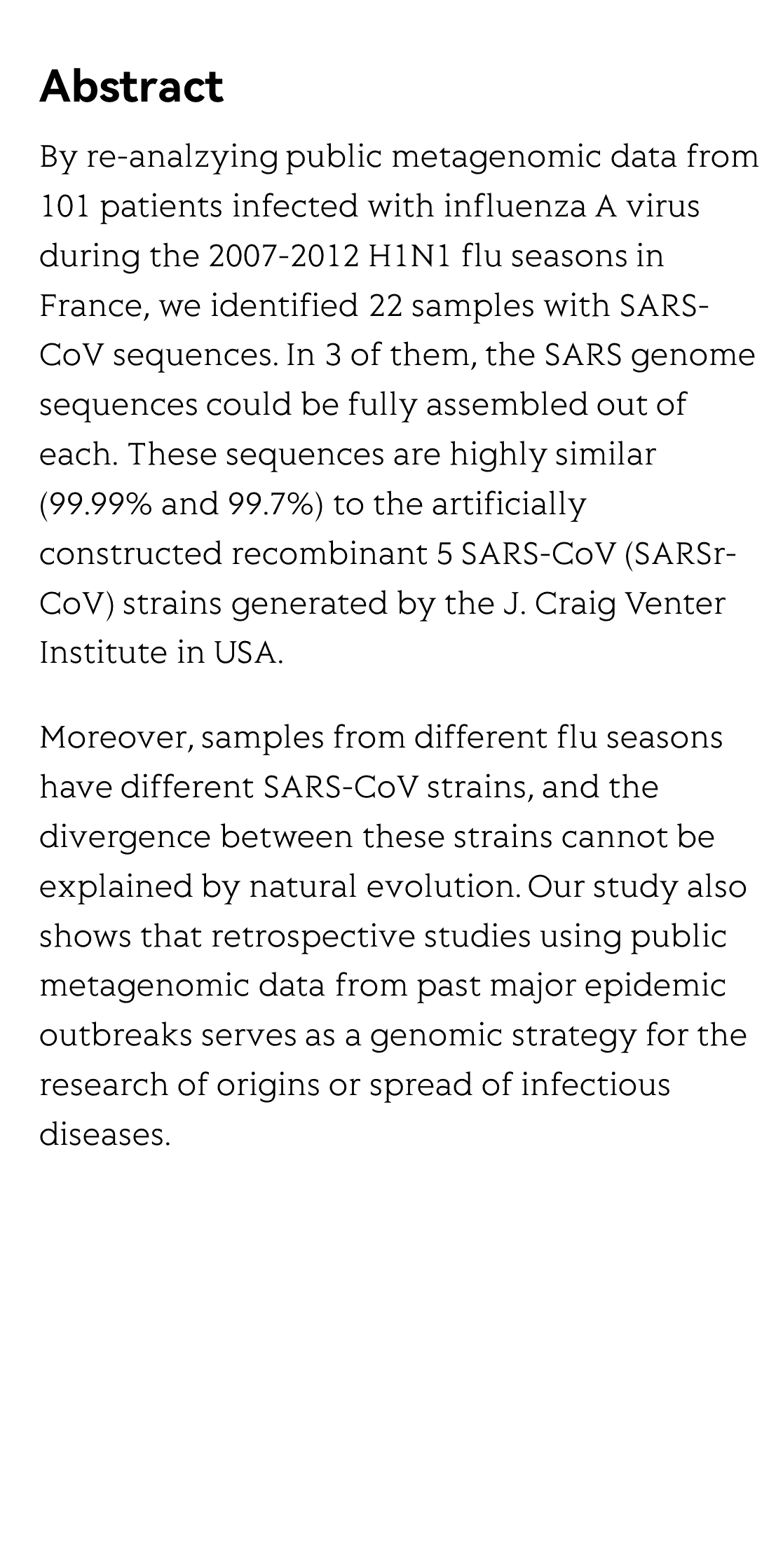Metagenomic evidence for the coexistence of SARS and H1N1 in patients from 2007-2012 flu seasons
2007-2012 流感季节患者 SARS 和 H1N1 共存的宏基因组学证据
2007年から2012年のインフルエンザシーズンの患者におけるSARSとH1N1の共存に関するメタゲノムの証拠
2007-2012 독감 시즌의 환자에서 SARS와 H1N1의 공존에 대한 메타게놈 증거
Evidencia metagenómica de la coexistencia de SARS y H1N1 en pacientes de las temporadas de influenza 2007-2012
Preuve métagénomique de la coexistence du SRAS et du H1N1 chez les patients des saisons grippales 2007-2012
Метагеномные доказательства сосуществования SARS и H1N1 у пациентов с сезонами гриппа 2007-2012 гг.
2007年から2012年のインフルエンザシーズンの患者におけるSARSとH1N1の共存に関するメタゲノムの証拠
2007-2012 독감 시즌의 환자에서 SARS와 H1N1의 공존에 대한 메타게놈 증거
Evidencia metagenómica de la coexistencia de SARS y H1N1 en pacientes de las temporadas de influenza 2007-2012
Preuve métagénomique de la coexistence du SRAS et du H1N1 chez les patients des saisons grippales 2007-2012
Метагеномные доказательства сосуществования SARS и H1N1 у пациентов с сезонами гриппа 2007-2012 гг.



Reviews and Discussions
